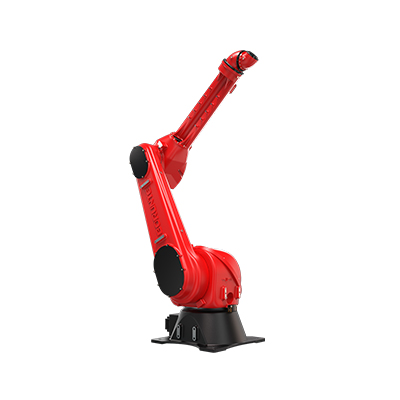- This topic is empty.
-
AuthorPosts
-
24/11/2023 at 14:53 #1204
Six-axis spray painting robots are a marvel of engineering and technology. These robots are designed to provide precise, efficient, and consistent paint application in industrial settings. But how exactly do these robots work their magic?
At the heart of a six-axis spray painting robot is its articulated arm with six degrees of freedom. This means that the robot can move in multiple directions and angles, allowing it to reach even the most complex surfaces with ease. The arm is equipped with a spray gun attached to an end effector, which is responsible for applying the paint.
The robot's movements are controlled by advanced software programs that enable precise positioning and control over every aspect of the spraying process. Using sensors and feedback systems, these programs ensure accurate detection of surface contours, adjusting the robotic arm's movement accordingly.
To achieve optimal paint coverage, the robot follows programmed paths determined based on factors such as shape, size, and desired finish. It moves systematically across the object being painted while maintaining a consistent distance from it.
Additionally, these robots often employ various techniques such as electrostatic charging or airflow management to enhance paint transfer efficiency and minimize overspray.
Six-axis spray painting robots offer unparalleled precision and efficiency when compared to traditional manual painting methods. By harnessing their capabilities for industrial applications, businesses can achieve improved productivity while ensuring high-quality finishes on their products.
Want to learn more about how these incredible machines revolutionize industrial painting? Stay tuned for our next blog section where we'll explore the advantages of using six-axis spray painting robots!

Advantages of Using Six-Axis Spray Painting Robots
Enhancing efficiency, precision, and productivity, six-axis spray painting robots are revolutionizing the industrial painting process. These cutting-edge machines offer numerous advantages that make them an invaluable asset in the manufacturing world.
These robots excel at consistency. Unlike human painters who may experience fatigue or lack of concentration over time, six-axis spray painting robots can consistently apply a uniform coat of paint without any variations. This ensures that every product receives the same high-quality finish, eliminating inconsistencies and improving overall product aesthetics.
Furthermore, these robots are incredibly precise. Equipped with advanced sensors and programming capabilities, they can accurately calculate spray patterns and adjust variables such as speed and pressure to achieve optimal results. This level of precision reduces wastage by minimizing overspray and enables manufacturers to save both time and resources.
Another key advantage is their ability to reach challenging areas effortlessly. With their flexible joints allowing for multi-directional movement, these robots can access tight corners or complex surfaces that may be difficult for human painters to reach manually. As a result, no spot goes untouched during the painting process.
Moreover, safety is significantly enhanced when using six-axis spray painting robots. By automating dangerous tasks such as working with hazardous chemicals or operating at heights, companies reduce the risk of accidents or exposure to harmful substances for their employees. This not only prioritizes worker well-being but also minimizes potential legal liabilities.
Additionally, these robotic systems greatly improve production turnaround times due to their high-speed operation capabilities. They can complete tasks much faster than manual laborers while maintaining consistent quality standards throughout the entire production process.
The Future of Industrial Painting: Potential Innovations and Improvements
The future of industrial painting holds exciting possibilities for innovation and improvement. As technology continues to advance at a rapid pace, we can expect to see even more sophisticated and efficient systems being introduced into the industry.
One potential area of improvement is the development of smarter and more intuitive six-axis spray painting robots. These robots could be equipped with advanced sensors and artificial intelligence capabilities, allowing them to analyze surfaces in real-time and adjust their spraying patterns accordingly. This would result in more precise and consistent coatings, reducing waste and improving overall quality.
Another area that shows promise is the integration of virtual reality (VR) and augmented reality (AR) technologies into the industrial painting process. Imagine being able to visualize how a particular paint color or finish will look on a surface before it's even applied! VR/AR could also be used for training purposes, allowing painters to practice their techniques in a simulated environment before working on actual projects.
Additionally, advancements in nanotechnology may lead to the development of self-healing coatings that can repair minor scratches or damage automatically. This would greatly extend the lifespan of painted surfaces, reducing maintenance costs for industries such as automotive manufacturing or aerospace.
Furthermore, there is ongoing research into eco-friendly paints that are not only safe for workers but also have minimal impact on the environment. These paints may utilize bio-based ingredients or innovative formulations that reduce volatile organic compound (VOC) emissions without compromising performance.
The future of industrial painting holds great potential for innovation through advancements in technology such as smarter robotic systems, virtual/augmented reality integration, self-healing coatings, and eco-friendly paint formulations. As these innovations continue to emerge, they will revolutionize how industrial painting is done – making it faster, more efficient, environmentally friendly while maintaining high-quality standards.
BORUNTE
sale@borunteglobal.com -
AuthorPosts
- You must be logged in to reply to this topic.